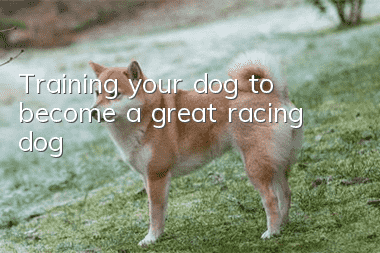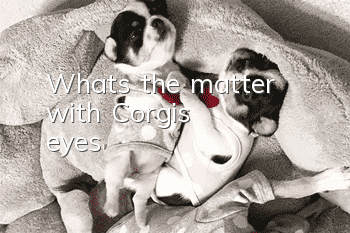Training your dog to become a great racing dog

If you want your dog to become a successful competition dog, in addition to body structure and gait, training, balanced diet, feeding nutritious dog food, the dog itself must like to show off itself, and have a good Guiding hand, all of these are very important. Training a puppy also requires a very important element, that is, we must be patient. We cannot be too anxious about puppies and treat training as a game. Training that is too strict and negative will only be self-defeating!
When the puppy is about 6-7 weeks old, we start training the puppy to stand on the table.
We use food to train them to stand up straight and focus on me. Each training session should not be too long. When you first start training, 5-8 minutes each session is enough. Don't bore your puppy.
Place food in front of his mouth to induce him to lean forward. Then position the puppy's limbs and use the command "Stand stay" or "Stay". After maintaining it for about 3-5 seconds, reward him with food. Slowly extend the time you stand. If he keeps moving forward (because he wants to get the food from your hand), you should place his front grip on the edge of the table. He knew that if he walked forward he would fall, and he should be able to stand still.
A good exercise is to pose the dog in front of a mirror. The front and back legs should be hocked at 90 degrees perpendicular to the ground.
By eight weeks of age, they should learn to stand still on a table and take photos of the puppies to help evaluate their potential as a competition dog. But just looking at the photos cannot tell whether they are participating dogs. We also have to use my hands to feel and use tools to measure the puppy's skeleton structure, and observe their gait and personality.
Innate quality and acquired training are equally important.
Only for some large dogs, except for training them on the table initially or when taking pictures, you can teach them to stand still on the ground at other times. Because big dog racing is not done on the table.
When the puppy is about 3-4 months old, we start to train the puppy to walk with a leash. Use food or toys to entice them to follow us. I like to use the "Let’s Go!" command. If they don’t want to follow, let them explore around and let them get used to having the leash around their neck, then teach them to follow you using food and the “Let’s Go!” command.
Also after their vaccinations, it is very important to take your puppy out to meet different strangers and dogs. They have to get used to being touched by strangers because they need to be checked by judges during competitions. A dog that is timid and afraid of strangers will definitely suffer in the arena! If circumstances permit, when you take the puppy outside to meet strangers, put the puppy into a show pose, and then ask your friends or strangers on the street to touch the puppy's body and look at its teeth. bite. (Note: This stranger touched the dogYou must be gentle when touching your dog, and don’t scare the puppy.) When a stranger touches your dog, you must continue to praise the puppy softly to let him know that he is being touched by a stranger, but you Still by his side. After touching, don't forget to reward him with food. Compliments such as "Good boy, Good girl" are very important. You need to give your puppy lots of encouragement and praise to strengthen his self-confidence. Also reward every time you do something right, no matter how big or small it is. Positive re-enforcement (positive teaching method) is very important. It means to praise someone when they do something right. If you make a mistake, don’t blame him.
By six months of age, puppies should be ready for their first competition and can officially participate in dog shows. In the United States, dogs must be at least 6 months old.
If you want to win, you must have a good dog and a good Handler, both are indispensable!! But!!! I have said before, "A good handler can make a bad dog looks good, but a A bad handler can make a good dog look bad." If you are a good handler, you know all of your dog's flaws and you can hide his flaws while showing off his strengths. You know what the correct speed is for your dog to run at. Use food to train them to look at you, use the command "Watch me" or "cookie", and train them to use their ears. At dog shows, it is important to show your dog's expression in front of the judges. Teach your dog Free Baitng, which means you don't need to pose him, he will stand perfectly on his own. To teach that, you need to teach your dog to "Stand Stay" and then use a leash to lead him to set his feet into the proper position. I use the command, "Step" or "Step up" or "Fix it", and use a subtle tug on the leash and a food command to get the dog to step forward, and once his feet are in place, give him some food and praise. Praising your dog when he does something right is very important. You want your dog to treat training as a game. Whenever you pick up the leash for training or competition, the dog should be happy and with a perky tail. Dull training will not get your dog good results in the ring. Make it fun!
I like to use beef liver or pork liver as a snack for competitions. Some delicious food, and food that you can’t eat every day.
Another important thing is that at dog shows, male handlers must wear suits and female handlers must wear skirts. Don't wear jeans or T-shirts. You need to dress up to show your respect for the judges.
Choose to useUse the correct competition leash for your dog's type. Learn how to groom your competition dog. Proper grooming can hide a dog's flaws. (Of course I am talking about long-haired breeds) You must bathe your dog before the competition. A dirty dog will not favor the referee. Nails should also be cut short!
"Observe! Observe! Observe!" Observe how other professional Handlers lead their dogs. I learned a lot of dog leash techniques from observation.
Train your dog to focus on you in the ring. Try to show off your dog's best side every moment in the ring. "Free Baiting" always makes a good impression on the judges.
Another very important thing, every Handler, always keep the dog between you and the referee! The dog you are showing must not be blocked from the judge's view by your own body, the bodies of other people, or the dog. You want the judges to be able to see your dog at every moment and every corner of the ring.
When the referee comes to check your dog, say hello to the referee and say "Good Morning" or "Good Afternoon". When the referee finishes checking your dog, say "Thank you". This represents the respect of your referee. . Whether your dog wins first place or loses, it’s time to say thank you to the judge. There are losers and winners in the competition. Don't take the results too seriously. Aim to participate and absorb the experience, and enjoy the entire process of being in a dog show.
A puppy with potential requires not only good innate genetics, but also acquired management and training are also very important!
I hope you can successfully train a successful competition dog!!! GOOD LUCK!
- How to train a Shiba Inu puppy? Training tutorial for Shiba Inu puppies!
- Common causes of hair loss in dogs
- Where is the best place to buy Shiba Inu?
- How to train a German Longhaired Pointer to be obedient
- How to feed an English Bulldog
- How old is a puppy before it can be bathed and how should it be bathed?
- How much does a Pug cost_Is it easy to raise? Pug pictures_Price_Training_Introduction
- How to neuter a female dog without surgery?
- What are the symptoms of dog rabies?
- How to feed Labrador puppies? How to raise Labrador puppies!



